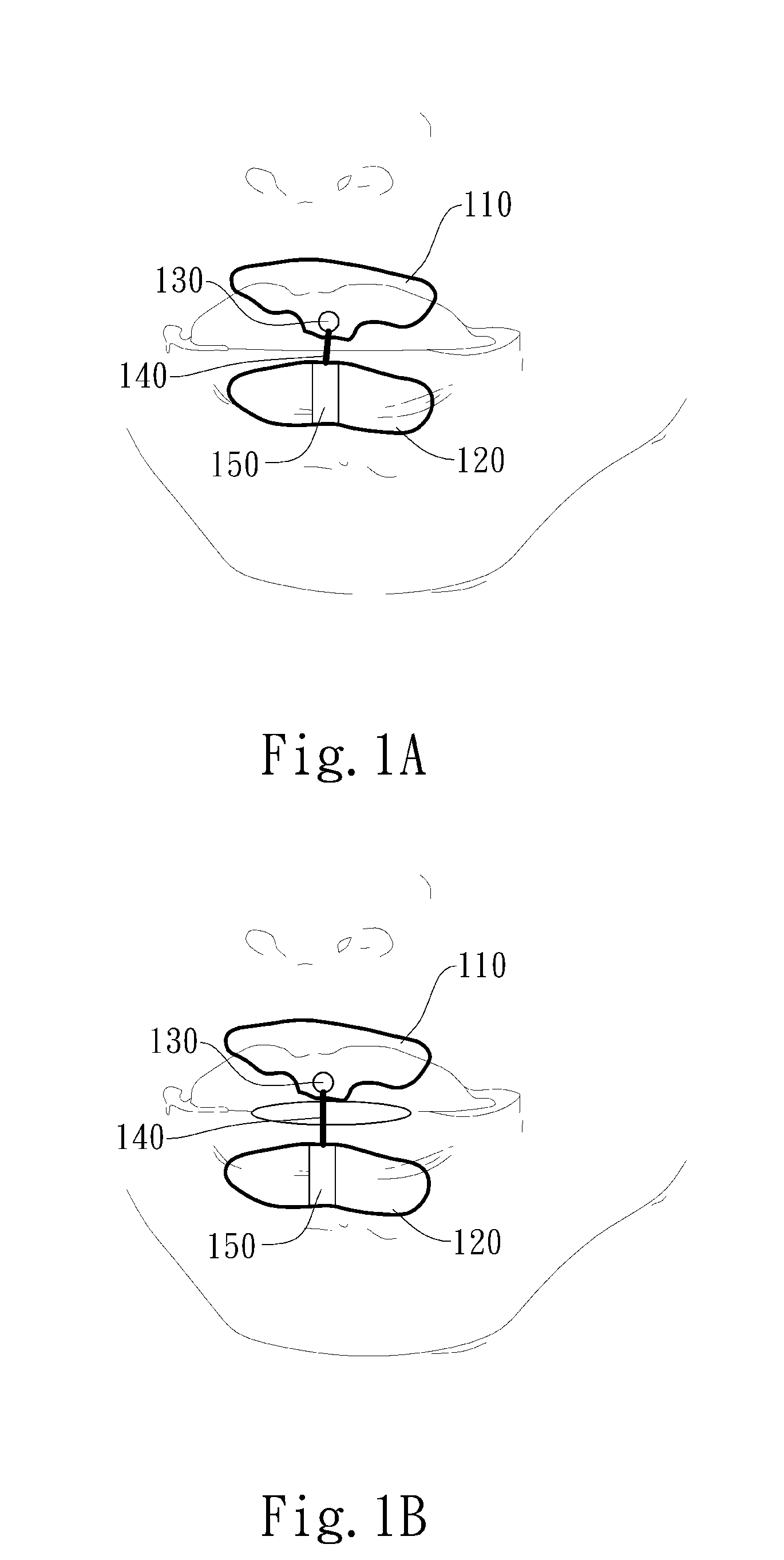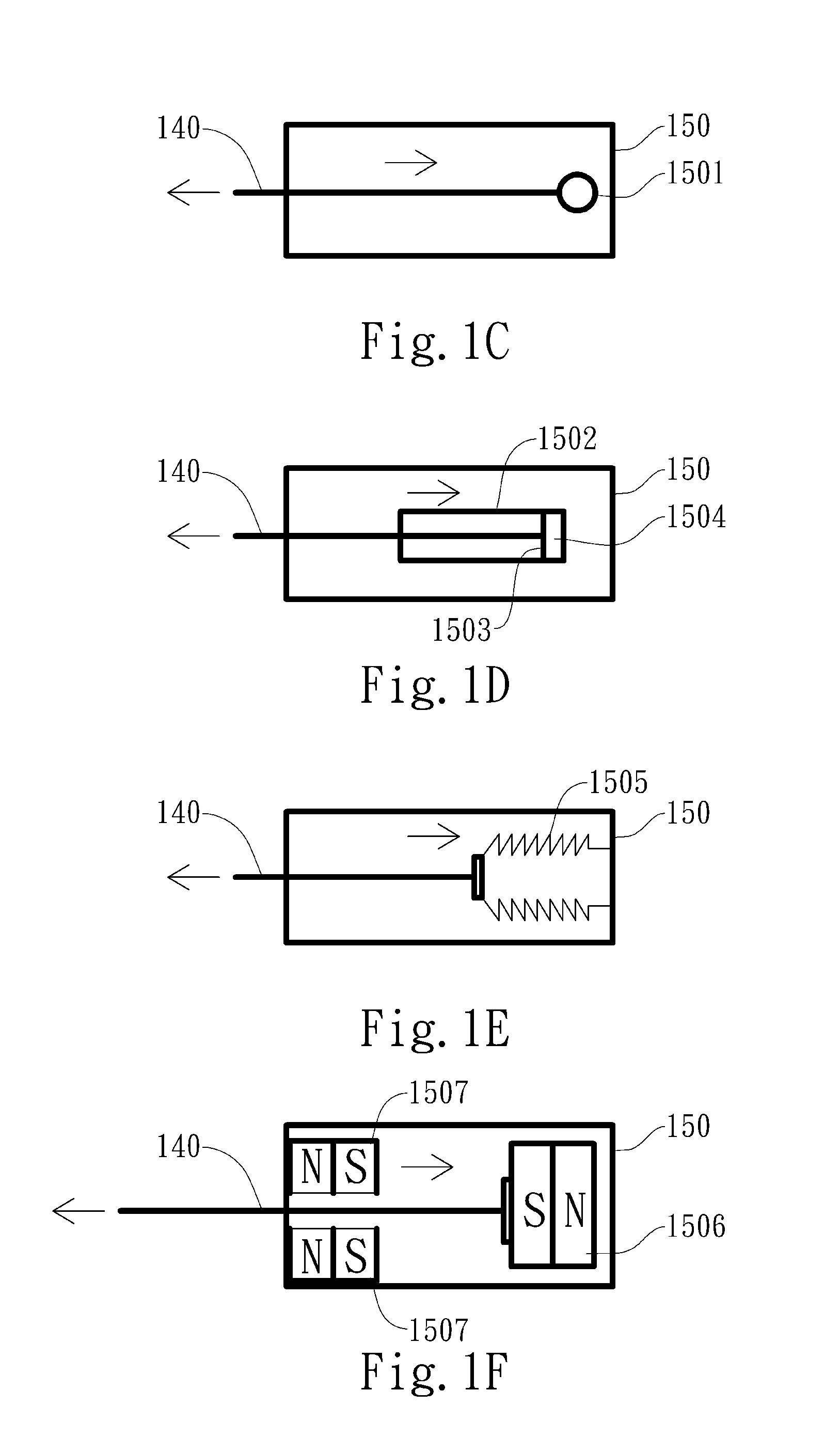Automated negative pressure oral apparatus
a negative pressure, oral technology, applied in the direction of snoring prevention, non-surgical orthopedic devices, other nursing devices, etc., can solve the problems of osa moderate to severe, reduced upper airway tone, poor concentration, etc., to prevent disengaging from patient's mouth, prevent sleep-disordered breathing, and reduce snoring or curing. snoring and obstructive sleep apnea
- Summary
- Abstract
- Description
- Claims
- Application Information
AI Technical Summary
Benefits of technology
Problems solved by technology
Method used
Image
Examples
first embodiment
[0041]FIG. 1D is a variation of the connecting part 140 and retractable part 150 according to the present invention. The retractable part 150 is a piston-type retractable part, which comprises a cylinder 1502 and a piston 1503. The connecting part 140 has a fixed length and is connected to the piston 1503. Please refer to FIG. 1A and FIG. 1B, in the initial condition, the position of the piston 1503 and the length of the connecting part 140 can maintain a user's mouth closed. The piston 1530 is kept at a balanced position and divided the cylinder 1502 into two, left and right, isolated compartments. At certain conditions when the user needs to open the mouth (such as coughing, sneezing, and yawning, etc.), the connecting part 140 pulls the piston 1503 toward the left side, as shown by the arrow direction of FIG. 1D. As a consequence, the pressure in the right compartment 1504 decreases and the pressure in the left compartment increases. Therefore, the distance between the anchoring ...
second embodiment
[0049]FIG. 5A and FIG. 5B demonstrate the front views of an oral apparatus according to FIG. 4A and FIG. 4B being used as a negative pressure sleep apnea treatment device. The oral apparatus further comprises a fluid conduit 280. The first end of the fluid conduit 280 is attached to the lower attaching component 220 and enters a user's oral cavity. The second end of the fluid conduit 280 is connected to a negative pressure source 290 (not shown). The negative pressure source 290 can draw air out of oral cavity and thus produce a negative pressure environment to pull the tongue, soft palate and other soft tissue forward to maintain the airway patency reducing snoring and apnea episodes. In one preferred embodiment of the present invention, the negative pressure source 290 can be integrated with the retractable part 250 and the controller 251 can be connected with the negative pressure source 290 to control on and off of the negative pressure source 290, as shown in FIG. 5C and FIG. 5...
PUM
 Login to View More
Login to View More Abstract
Description
Claims
Application Information
 Login to View More
Login to View More - R&D
- Intellectual Property
- Life Sciences
- Materials
- Tech Scout
- Unparalleled Data Quality
- Higher Quality Content
- 60% Fewer Hallucinations
Browse by: Latest US Patents, China's latest patents, Technical Efficacy Thesaurus, Application Domain, Technology Topic, Popular Technical Reports.
© 2025 PatSnap. All rights reserved.Legal|Privacy policy|Modern Slavery Act Transparency Statement|Sitemap|About US| Contact US: help@patsnap.com



